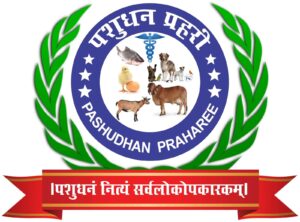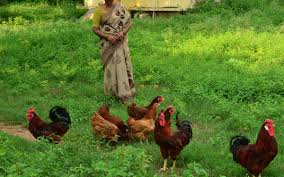Protocols for Organic Poultry Farming in India
The poultry population of India grew at an exponential rate of 16.8% from 2012 to 2019 taking the number to 851.8 million last year. When it comes to animal agriculture in India, the poultry sector was valued at INR 1,750 billion in 2018. The market is further projected to reach INR 4,340 Billion by 2024, growing at a CAGR of 16.2% during 2019-2024. With changing consumer preference and increased health awareness, there has been a sudden shift of attention towards sustainable organic poultry farming in India. Poultry farmers in India are starting to realise how a small shift from conventional systems can benefit the animals, consumers, and of course, their business.
How Organic Farming can be a Better Substitute
The “naturalness” of organic poultry farming can be a suitable alternative to conventional poultry farming methods. Organic poultry farming will result in birds having better outdoor access, low stocking densities, an organic diet, and treatment methods for diseases that do not use chemicals. In 2014, the Center for Science and Environment conducted a study on 1500 samples from 530 birds on 18 poultry farms in 6 districts in Punjab to test their resistance to a variety of antibiotics crucial to human medicine. High levels of resistance to many important antibiotics were found – 39% for ciprofloxacin and 89% for nalidixic acid. Even more alarming reports were shared by the Science journal recently stating that 4,796 tons of antibiotics will be fed to animals reared for food by 2030 if proper regulations are not put in place. Unlike conventional poultry farming, organic poultry farming requires that poultry is raised without antibiotics, synthetic pesticides, hormones, and mammalian byproducts in the feed.To prevent the spread of diseases and counter antibiotic resistance, a new approach is being adopted across poultry farms globally i.e. bacteriophages. Bacteriophages are viruses that bind with the bacteria, replicates, and kills it by bursting or lysing. Bacteriophages are very specific and can be a better substitute for reducing the use of antibiotics in poultry. Bacteriophage based disinfectants are also helpful in preventing horizontal transmission of pathogens.
Poultry industry has developed in to a full fledged industry with immense potentials for meating domestic market with per capita availability of eggs and meat increasing from 18-19 eggs and 0.091 Kg. poultry meat in the year 1975 to 69 eggs and 3.6 Kg. of meat at present. With an annual output of ˃ 88.14 billion eggs & 3.46 million tonnes(2016-17), India ranks 3rd largest producer of eggs (after china & USA) & 5th largest producer of broiler in the world (after USA, China, Brazil and Mexico). The increased poultry production during last 4-5 decades was possible largely because of a fundamental change in the view point of both, the planners and farmers. Thousands of poultry farmers have now visualized that poultry farming is a profitable venture as a means of livelihood and economic prosperity. Today poultry industry has been playing a very significant role in various socio- economic development programs by way of providing self- employment, supplementary income and protective food to all the section of society especially for rural masses in the country. A commission of FAO/ WHO codex alimentary defined organic farming as a unique production management system which promotes and enhances org-ecosystem health, including biodiversity, soil biological activity and is accomplished by using on farm agronomic, biological & mechanical methods in exclusion of all synthetic off farm inputs.
The main objectives of organic farming are to established and maintain soil-plant, plant-animal and animal- soil inter dependence and to produce a sustainable agro- ecosystem based on local resources (Biradar et. al. 2011). The establishment of organic dairy/ poultry husbandry requires a specific care and a sufficient time. This period is called as conversion period. This is the time interval between the start of organic management on farm and certification of the farm and its products. In organic poultry farming the preference should be given to local/ indigenous breeds or breeds developed for rural poultry which can thrive in organic management system. Further proper care and suitable environment should be provided where the birds can exhibits their natural behavior.
Present status and possibilities:
Present status of organic poultry farming: The revolutionary changes in poultry industry in last 4-5 decades itself is a matter of pride. In 1957 the white egg layer used to produce 210- 220 eggs with the efficiency of 3.4- 3.5 kg. feed against 290-300 plus eggs with 2.5-2.6 kg. feed per kg. egg at present. IInd 55 years back 6- wks broiler weight was 0.8 kg. and 3.2 kg. feed was required to produce 1 kg body weight, where as today at the same age 1.8 kg. body weight is attained the feed efficiency of 1.9 kg.
From last one decade due to increased health awareness and consumer preference organic farming increased day by day throughout the world. In USA organic meat sector is growing very rapidly in which poultry meat (Chicken meat) is prominent. Chicken meat is the most important organic meat due to its short production cycle & low cost as compared to other livestock meat. India exported a large no. of organic agriculture product every year which are totally of plant origin, where as India has a large no. poultry population ˃ 729.21 millions, Even of a small shift from current conventional production to organic poultry production can create a large market to domestic consumption as well as for export. As India has a good resource there may be a vast scope for production of organic farming in export market.
Issues with Conventional Poultry Farming
Over the last four decades, the poultry sector of India has transformed immensely to become a scientific, commercially organised industry. However, a major part of the poultry industry is still dependent on conventional methods that not only violate animal welfare but also cause expanding use of antimicrobials in poultry. As a consequence of the growing demand for animal protein and use of antibiotics, drug-resistant infections in poultry and humans have become a serious issue. Under conventional systems, the use of antibiotics without any proper regulatory limits poses a serious threat of antibiotic resistance. Though in 2014 the Department of Animal Husbandry advised controlled use of antibiotics in animal feeds, so far it has made no difference. According to the National Environmental Engineering Research Institute (NEERI),Arsenic is fed to chickens to promote growth and weight gain with less feed. The long term exposure to this substance can cause cancer. Growth hormones given to the fowls is another issue related to the health of the consumers. Besides the growing use of antibiotics, conventional poultry farming practices also result in poor management of litter, manure, and wastewater that can adversely affect the lives of people.
Organic Poultry Breeding:
There is a large no. of poultry breeds/ strains which can rear for commercial and rural poultry production, but among them few breeds/ strains are suitable for organic poultry farming. Indigenous/ local breeds or breeds developed with organic & free range system are mind may be used for organic poultry farming. Breeds/ strains used in intensive production and have some specific disease health problems should be avoided from breeding purpose. Natural breeding method should be used. For improve the fertility A.I. can be use under guidance of technical expert or veterinary experts. Any hormonal treatment should be avoided for improve the growth and egg production point of view. Some breeds which have developed by different organization for rural poultry farming and have better performance can select for above purpose among them same as are under:
Table: Breed/ variety developed for rural poultry farming:
| Sl. | Breed/ variety | Type | Institution | Remarks |
| 1. | Vanaraja | Dual | PDR, Hyderabad | Better immune competence |
| 2. | Giriraja | -do- | -do- | Suitable for meat& egg |
| 3. | CARI Gold | -do- | CARI, Izzatnagar | -do- |
| 4. | CARI Nirbhik | -do- | CARI, Izzatnagar | -do- |
| 5. | CARI Shayama | -do- | CARI, Izzatnagar | -do- |
| 6. | CARI Hitcari | -do- | CARI, Izzatnagar | -do- |
| 7. | Nico- rock | -do- | CARI, Portblair | Suitable for hot humid costal area |
| 8. | Krishna Priya | -do- | KAU, Manuthy | Suitable for meat& egg |
| 9. | Gram Priya | Egg | PDR, Hyderabad | Suitable for egg |
| 10. | Nishibari | Egg | CARI, Portblair | Suitable for hot humid areas |
| 11. | Rajashree | Egg | SVVU, Hyderabad | Suitable for egg |
| 12. | Pratapadhan | Dual | MPUAT, Udaipur | Reasonable with local birds of Rajasthan |
| 13. | Kamarupa | Dual | AAU, Guwahati | High survival rate |
| 14. | Srinidhi | Dual | PDR, Hyderabad | High egg producer under farm as well as backyard condition |
Housing requirement:
The main objective of housing should be to protect birds from cold, rain, heat, strong wind, adverse weather & predators. A poultry house should have easy access to the connecting main road. House should be well ventilated, solid walls and only raised 3ft. high from ground and chicken wire fitted up to the roping base to avoid direct wind droughts into poultry house. House should be designed which allow maximum natural light. The foraging area can be constructed entirely of poles and chicken wire on walls & road. Some open area in the form of with plant and grasses which provide the green forage to the birds should be developed near to poultry house. Green forage improve the yellow egg yolk quality in the birds and running during foraging in lawn area helps in control external parasites in birds as well as acting as natural disinfectant for pathogens/ germs. A adult laying bird in organic system should be provided of minimum 2ft./ bird in the confined and 3ft./ bird as foraging area i.e. 5 sq.ft./ bird. The litter must be kept dry at all times by removing the wet and caked litter. Sufficient feeding and watering space (4-5 cm/ bird for feeding and 3-4 cm/ bird for watering) should be provided to the birds to reduce number of competitions among birds.
Feeding:
Feed & feeding is an important factor in the whole operation & contribute as about 60-70% of total recurring expenses. Poultry must be fed a diet that contains a minimum of 60% certified organic feed. Not more than 20% feed should come from non-organic feed. Organically reared birds need 20-50% more feed per unit of weight gain than conventional reared birds, mainly because of increased activity in the run. Scattering grain & providing roughages is a good way of keeping the hens busy and healthy. However, if feeding a compounded diet, the nutrient content of the scatter grain will affect the overall nutrient intake of the birds & could feed to imbalances. The average feed consumption in organic production system for layer and broiler are 130 gm and 85 gm, respectively which is 118 and 77 gm in conventional production system. In organic poultry production, birds should be reared only for one laying season.
Health Management:
As prevention is better than cure but it is important to note that animals raised in an organic system be treated with antibiotics, if they become infected with a disease for which a no-antibiotic treatment is not available or has not been effective. Unfortunately, birds treated with antibiotics can no longer be marketed as organic. So it is important to find out some alternative treatment methods for common poultry ailments. In this context some points may be beneficial regarding the alternative methods of treatment of poultry birds.
- Currently the rules for organic animal husbandry do allow routine vaccination where there is an urgent need and other methods of treatment can be regarded as less acceptable.
- A probiotic is a culture of single bacteria strain or mixture of different strains that can be use to an animal or bird to improve some aspects of their health. A verity of different types of bacteria or undefended culture has been tested as probiotics in poultry. The results showed that feeding of probiotics to poultry may change their gut micro flora in a way that is beneficial to the health of the birds reducing the number of food borne pathogens carried by the birds.
- Prebiotics are non-digestible carbohydrates and many of them may be used for improving the health status of poultry birds.
- Various plant extracts especially essential oils have been tested for their anti-microbial abilities. Some of them like oil of black paper, essential oil of cinnamon, garlic oil, etc found beneficial for improve some aspects of digestibility of poultry birds.
The above probiotics, prebiotics and plant extract can be used an organic poultry farming to improve the growth and health status of poultry birds as a alternate source of antibiotics.
Wrapping Up
There is a severe lack of technical knowledge among poultry farmers in India that leads to the acceptance of sub-standard practices. As a result, flock health is affected. Use of organic poultry farming procedures would lead to safer poultry products through proper poultry welfare. This would also make sure that consumers face no risk of infections from the consumption of poultry-based products like egg and meat.
FSSAI SOP FOR ORGANIC LIVESTOCK & POULTRY PRODUCTION IN INDIA

FSSAI SOP FOR ORGANIC LIVESTOCK & POULTRY PRODUCTION IN INDIA
Organic Livestock Production and Beekeeping
Compiled & Shared by- Team, LITD (Livestock Institute of Training & Development)
Image-Courtesy-Google
Reference-On Request.


